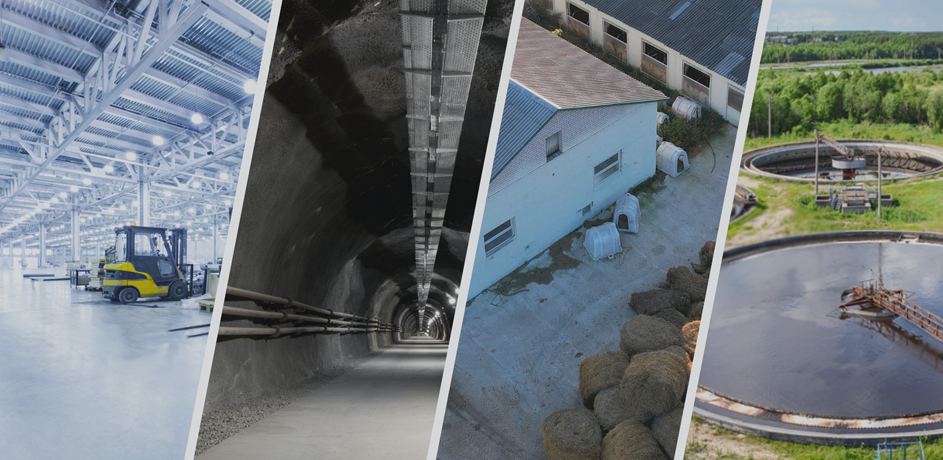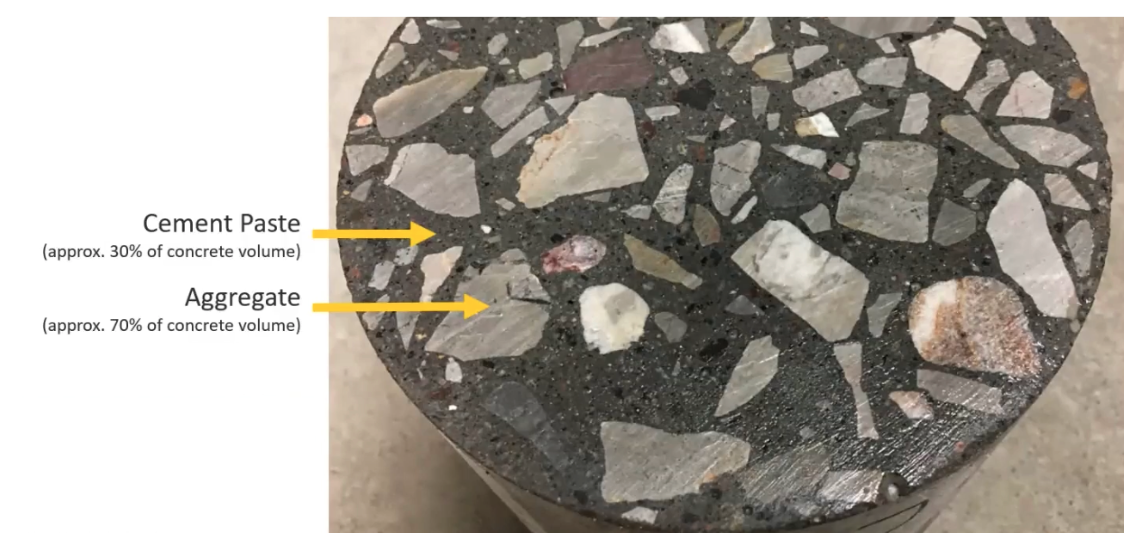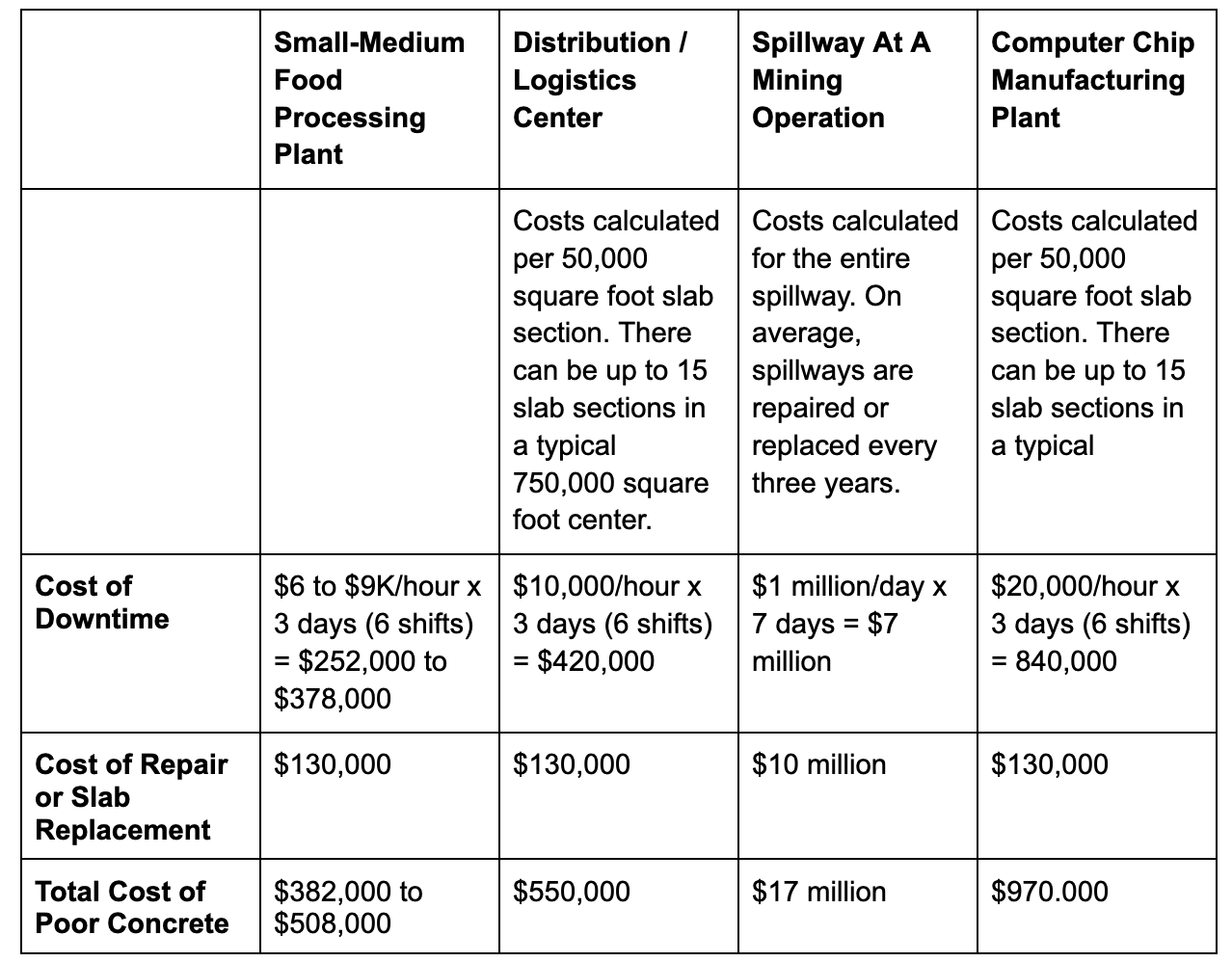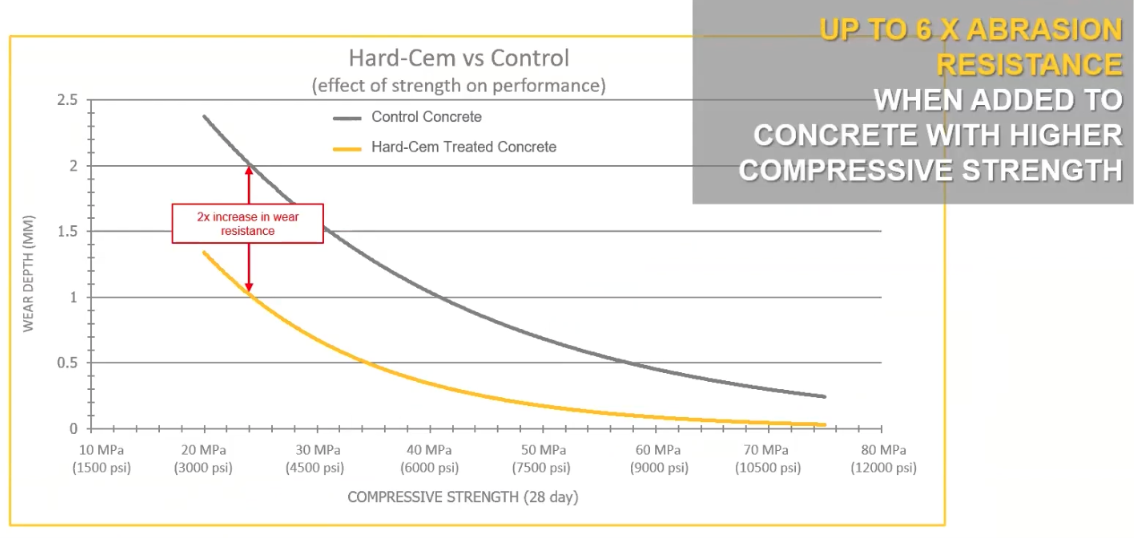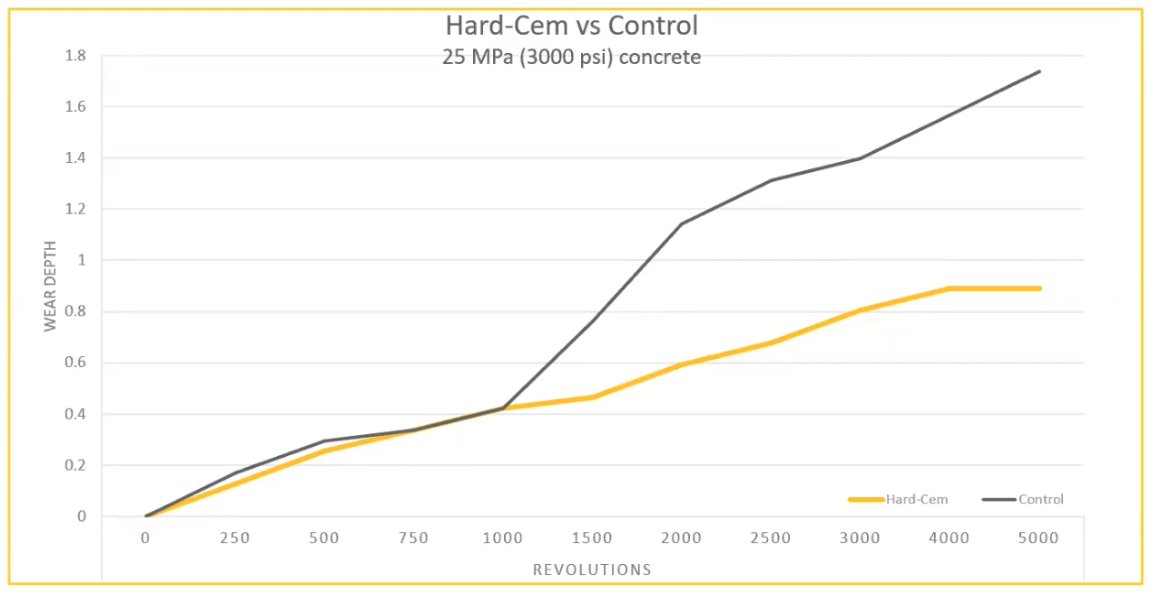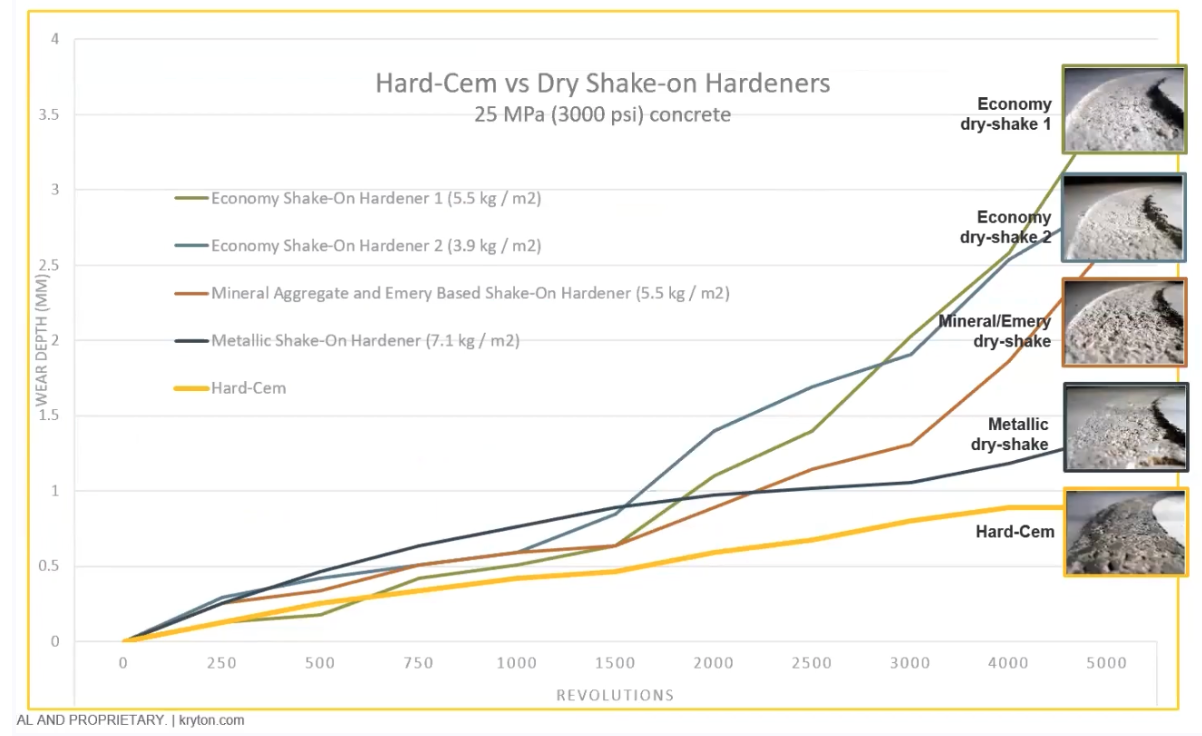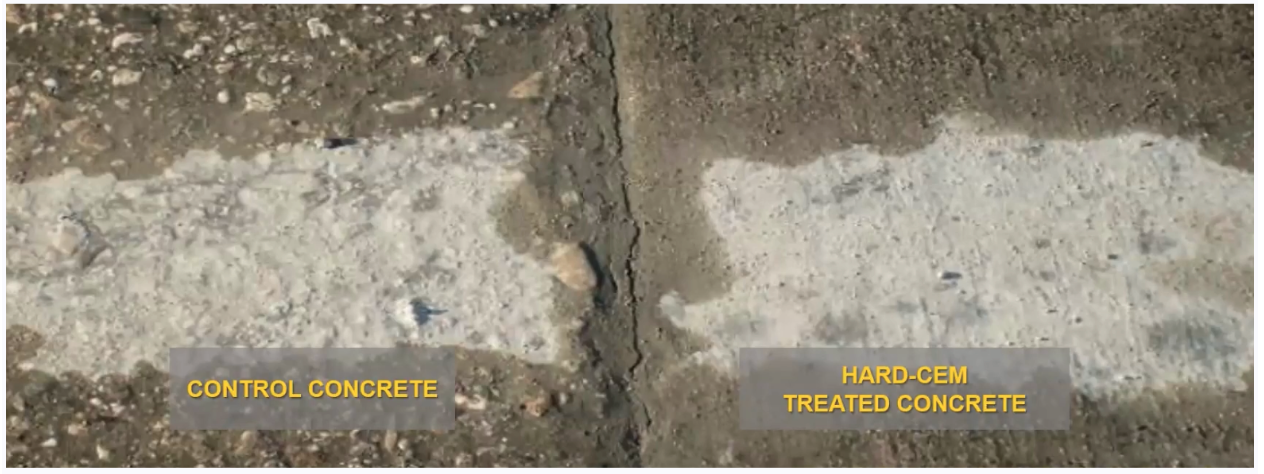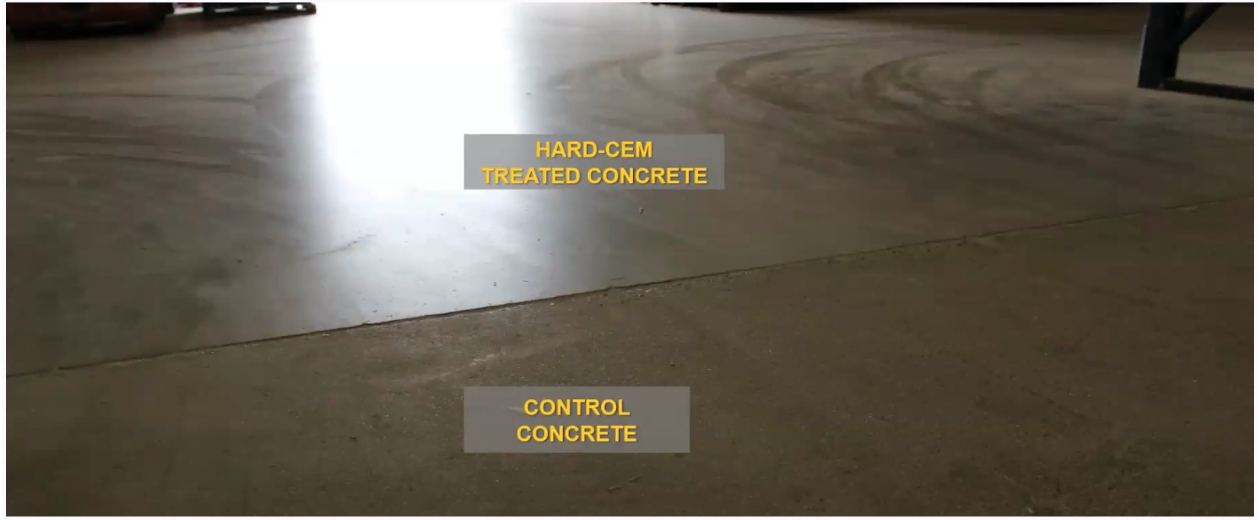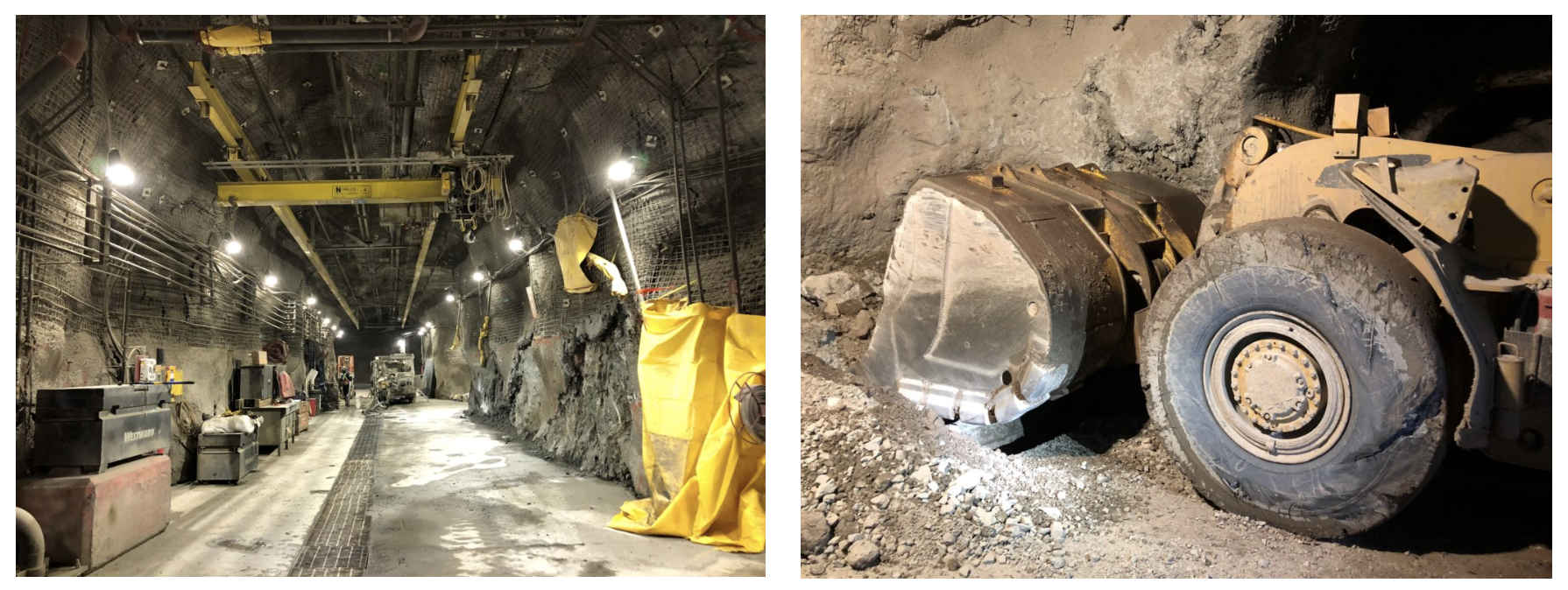Category
- Concrete Best Practices
The durability that concrete is renowned for is often compromised by abrasive and erosive forces. Physical and environmental stressors can degrade concrete surfaces over time, leading to costly repairs, significant downtime, and unsustainable concrete.
Traditional methods to enhance abrasion and erosion resistance, such as shake-on hardeners and liquid sealers, come with their own set of limitations. However, an integral hardening admixture, Hard-Cem, has emerged as a more effective and sustainable solution that improves the durability and longevity of concrete while also helping to reduce the carbon footprint of construction projects.
In this blog post, we’ll recap the content covered in our recent webinar, Everything You Need to Know about Kryton’s Abrasion and Erosion Resistant Admixture, where we discuss:
- Causes of abrasive and erosive wear in concrete
- Traditional protective strategies
- Modern abrasion and erosion resistance with Hard-Cem
- The impact on carbon footprint
- Real-life use cases and applications
Causes of Abrasion and Erosion in Concrete
Abrasion and erosion are the primary forces that wear down concrete surfaces. Abrasion is caused by physical contact, such as tires, tracks, and other heavy machinery moving over the concrete, while erosion is typically the result of water flow, often carrying particles that grind down the concrete over time. The aggregate in concrete is generally very hard and resistant, but the paste that binds it is more vulnerable to wear. According to the Civil Engineering Handbook, cement paste does not have good resistance to attrition. The aggregate becomes exposed as the paste wears away, leading to accelerated deterioration.
The financial impact of such wear can be substantial. Aside from the repair costs, downtime at critical facilities in industries like manufacturing and mining can result in losses of up to $1 million per day, according to research commissioned by Advanced Technology Services (ATS) and Nielsen Research.
The Cost of Poor Concrete by Industry Use Case
Traditional Protective Solutions: Limitations and Drawbacks
Various methods exist to protect concrete surfaces, each with distinct advantages and considerations.
1. Shake-On Hardeners
Shake-on, or dry shake, hardeners involve applying a blend of metallic or non-metallic aggregates to the surface of fresh concrete. They use bleed water to create a dense, durable surface to the top of the concrete.
Dry shakes are limited in their application as they are incompatible with air entrainment and many supplementary cementitious materials (SCMs). Additionally they cannot be used on formed surfaces. Modern concrete mixes with low water content can also make it difficult to achieve the necessary bleed water for proper application.
On flat surfaces, dry shakes typically provide decent initial abrasion resistance if applied correctly. The complexity involved in their application, however, often negatively impacts their overall performance. The primary challenges revolve around ensuring an even and consistent distribution of the material and effectively handling surface moisture both before and during the application.
Dry shakes are applied after the concrete is poured and require additional expert labor and equipment for the application, which often creates schedule delays and incurs extra costs. In addition, most dry shakes pose significant risks on site. The silica dust generated during application is a recognized health risk and has broader environmental implications. For this reason, workers applying the shake and workers in the vicinity of the application area are required by OSHA to adhere to multiple safety precautions.
| Pros | Cons |
|
|
2. Liquid Sealers
Liquid sealers — also known as chemical hardeners or densifiers — are applied to the concrete surface and react chemically to fill concrete pores with silicates, enhancing hardness and reducing permeability. They can be effective in increasing surface durability, particularly against surface wear and abrasion, but the benefits are primarily limited to the surface, offering little to no improvement to the concrete’s internal structure.
|
Despite being cost-effective and offering some superficial benefits, liquid sealers have several technical shortcomings. Like dry shakes, they are applied post-pour and require skilled laborers for application. Improper application can result in undesirable surface deposits, affecting the appearance and potentially requiring mechanical abrasion for removal.
Liquid sealers are well known to degrade over time. In the best case, they require frequent re-application, which isn’t just labor-intensive but also results in slab downtime and lost productivity. In the worst case, they result in the replacement of the entire slab due to abrasion and erosion that takes place once the wear layer delaminates.
| Pros | Cons |
|
|
3. Increased Cement Content
Another traditional approach to improving abrasion resistance is simply to increase the compressive strength of the concrete by adding more cement.
While this might appear as the simplest solution for abrasion and erosion resistance, increasing cement content presents its own problems.
Firstly, concrete that is too strong often results in curling and cracking, undermining the very durability it aims to enhance. In addition, cement production is notoriously carbon-intensive. Ramping up its usage exacerbates environmental challenges and results in a greater carbon footprint. For example, increasing the concrete strength from 25 MPa to 40 MPa requires about 100 kilograms of extra cement per cubic meter, which significantly impacts both cost and sustainability.
| Pros | Cons |
|
|
Modern Solutions to Abrasion & Erosion Resistance: Integral Hardening
Admixtures that add durability integrally to concrete can deliver long-lasting, abrasion and erosion-resistant concrete while also lowering the carbon emissions of concrete projects.
Hard-Cem is the original and best example of this. It is a concrete admixture for abrasion and erosion resistance that — unlike dry shakes and liquid densifiers — is integrated directly into the concrete mix to improve the durability, lifespan, and sustainability of concrete structures. It uses a unique metal-mineral microstructure that delivers high-performance, low-carbon concrete with no additional floor treatments required.
Hard-Cem has been proven to significantly reduce replacement and repair requirements and more than doubles the wear life of concrete — and outlasts high-performance concrete by 6X — effectively lowering the structure’s embodied carbon footprint over its lifetime.
In a recent study by ASTM C627 standards, a Robinson Floor Test was used to test the abrasion resistance of Hard-Cem. The test ran 273 kilogram (800 pound) steel wheels over Hard-Cem treated concrete and a control sample for 5,000 revolutions to note the impact. The Hard-Cem-treated concrete exhibited significantly less wear compared to the control sample.
How Hard-Cem Works
Hard-Cem is added to the concrete at a rate of 40 kilograms per cubic meter (or 66 pounds per cubic yard). The bags are simply tossed into the mixer without opening, ensuring dust-free and accurate dosing.
It works by reinforcing the concrete paste with a unique mineral-metal structure that greatly improves abrasion resistance while also enhancing the bond between the paste and the aggregate.
Unlike dry shake hardeners, Hard-Cem is fully compatible with air-entrained concrete and can be used in all types of concrete, including those with supplementary cementing materials like fly ash or slag. Even the more expensive metallic dry shake options could not match the performance of Hard-Cem. Hard-Cem is also suitable for both formed and sloped surfaces, as well as shotcrete applications.
Reducing the Carbon Footprint of Concrete
One of the key advantages of Hard-Cem is its contribution to sustainability. In fact, Hard-Cem contributes to the requirements for up to seven categories of LEED points and Envision and STARS credits in several ways:
- By using less cement to achieve the same durability as high-strength concrete, Hard-Cem enables producers to significantly lower the carbon emissions of concrete.
- Hard-Cem improves the durability of concrete, reducing the need for carbon-intensive and costly repairs and maintenance.
- By more than doubling the longevity of concrete, Hard-Cem postpones demolition and the associated release of carbon by decades.
Case Studies and Real-World Applications
To date, over 6.5 million square meters – 80 million square feet — of Hard-Cem-treated concrete has been installed across North America. Field studies of this concrete prove its superiority over traditional solutions.
Concrete Ready-Mix Plant in Oregon
At a concrete ready-mix plant in Oregon, Hard-Cem was tested by placing concrete slabs under truck traffic. After significant use over four years, the Hard-Cem-treated concrete outperformed the control sample, showing far less wear.
Warehouse Loading Dock in British Columbia
In a warehouse in British Columbia, Hard-Cem was used in the loading dock area, while regular concrete was used for the rest of the floor. After 14 years, the Hard-Cem-treated area showed significantly less wear compared to the rest of the warehouse, demonstrating its long-term durability.
John Hart Dam Seismic Upgrade
The spillway of the John Hart Dam in British Columbia was completely redone with Hard-Cem. The harsh environment of constant water flow and abrasive particles was a perfect test, and Hard-Cem provided superior protection against erosion, extending the service life of the structure.
New Afton Mine
By using Kryton’s Hard-Cem admixture in their concrete, New Gold Inc.‘s New Afton Mine has extended the life of its concrete infrastructure, avoiding at least two replacement cycles and reducing the mine’s lifetime carbon footprint by 49.5%. This solution has not only minimized environmental impact but also significantly lowered maintenance costs. Read the full case study.
A Strategic Investment in Durability and Sustainability
In a world where both durability and environmental impact are increasingly important, Hard-Cem provides a robust solution for enhancing concrete performance. Whether for warehouses, transportation structures, waterworks, or industrial applications, Hard-Cem not only protects concrete from the harshest conditions but also supports efforts to reduce the carbon footprint of construction.
Hard-Cem Applications
| Industrial | Transportation | Waterworks |
|
|
|
For more details, watch our on-demand webinar Everything You Need to Know about Kryton’s Abrasion and Erosion Resistant Admixture or contact our team.

